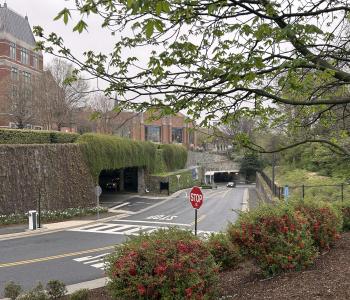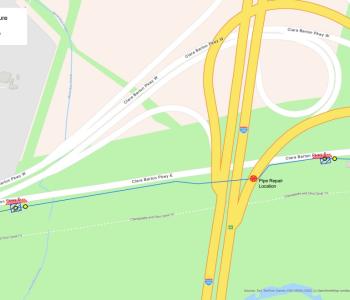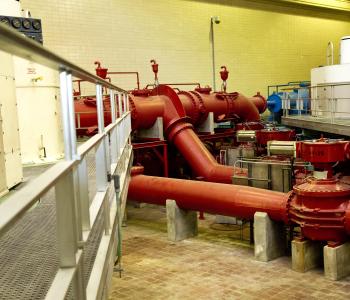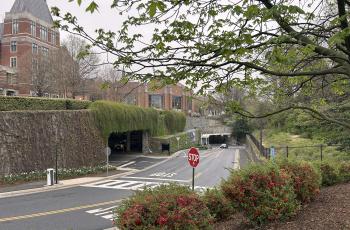City, Partners Unveil New Vision for Green DC
WASHINGTON, DC The key players in the Districts green future today presented a vision of a city with tree-lined streets and building roofs covered in plants where the Potomac and the Anacostia are less polluted because of reduced stormwater runoff and fewer sewage overflows, and thousands of residents have good jobs building green infrastructure.
The U.S. Environmental Protection Agency (U.S. EPA), the District Department of the Environment (DDOE) and the DC Water and Sewer Authority (DC WASA) joined with the Natural Resources Defense Council (NRDC) and Casey Trees in embracing green infrastructure and committing to work together toward its use in DC.
"The nations capital is becoming a national model for cleaner water and greener development," said Benjamin H. Grumbles, Assistant Administrator for Water at the U.S. EPA. "Towns and cities like Washington, DC are looking to rooftops, roadsides, and streambanks to green their gray infrastructure. With trees, plants, and parks we can reduce stormwater, prevent pollution, and increase the health and beauty of watersheds and communities
Everyone wins in a greener District of Columbia, said DDOE Director George S. Hawkins. By curbing stormwater runoff, these building techniques reduce pollution and the cost to ratepayers. But they also make for a more beautiful city with cleaner air.
I am extremely pleased that we are poised to begin this city-wide partnership to reduce stormwater runoff and pollution, said Jerry N. Johnson, General Manager of DC WASA. This is one component in a large-scale, long-term plan to help solve a number of environmental issues. This is one additional major step towards cleaner, more vibrant and useful waterways. More important, anyone can participate in this greening of DC.
A new modeling analysis by LimnoTech looked at a city with green roofs, tree cover, rain barrels and rain gardens, thousands of streetside planters and tens of thousands of curb bump-outs, and permeable pavement. The analysis found that implementing a comprehensive green build-out could mean:
- More than 4 billion gallons less runoff pollution a year a 26.3% drop from today.
- A reduction in the combined sewage overflows triggered by stormwater runoff of almost a billion gallons a year.
To give a sense of the economic impact of a commitment to green infrastructure, just implementing the models green roofs program would create opportunities for 1,769 full-time jobs every year for ten years.
Many of the simple technologies so favorably evaluated in this report to keep pollutants from entering our streams and rivers will also provide superior growing conditions for trees and aid efforts to increase tree canopy in the District, said Mark Buscaino, executive director of Casey Trees. Larger, healthier trees and less stormwater is a win/win for the environment, neighborhoods and residents of Washington DC.
Its true that today were talking about streets, roofs, and sidewalks, said Nancy Stoner, co-director of NRDCs Water Program. But what that really means is jobs, families and communities. Green infrastructure means quality home-grown jobs, clean water for our kids, and neighborhoods where we are proud to live.
In addition to making DC an even more livable city, reducing runoff pollution through green infrastructure will protect some of DCs most beautiful outdoor spaces, such as the new Nationals ballpark, the National Arboretum, Kenilworth Aquatic Gardens and Rock Creek Park.
# # #
Alan Heymann (DDOE) 202-741-2136
Dan Smith (Casey Trees) 202-349-1894
Joel Finkelstein 202-822-5200 x279
Pamela Mooring (DC WASA) 202-787-2089







